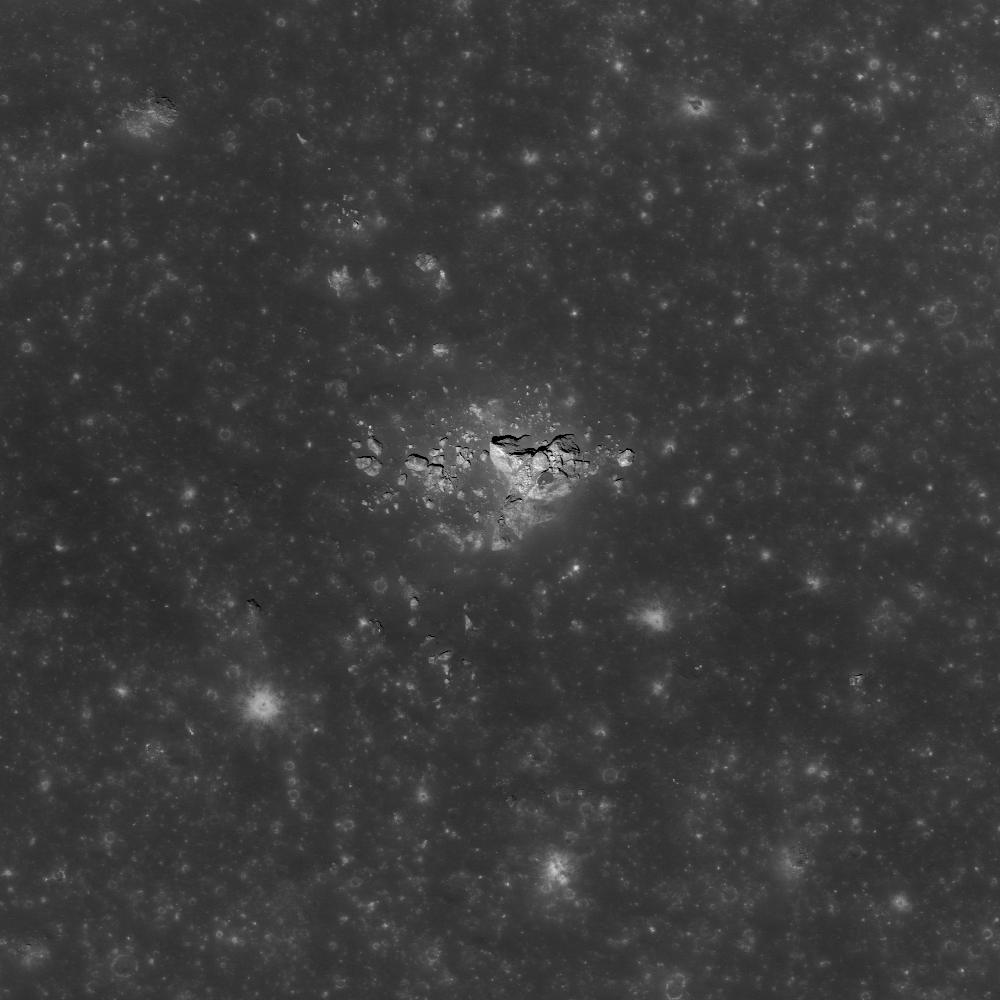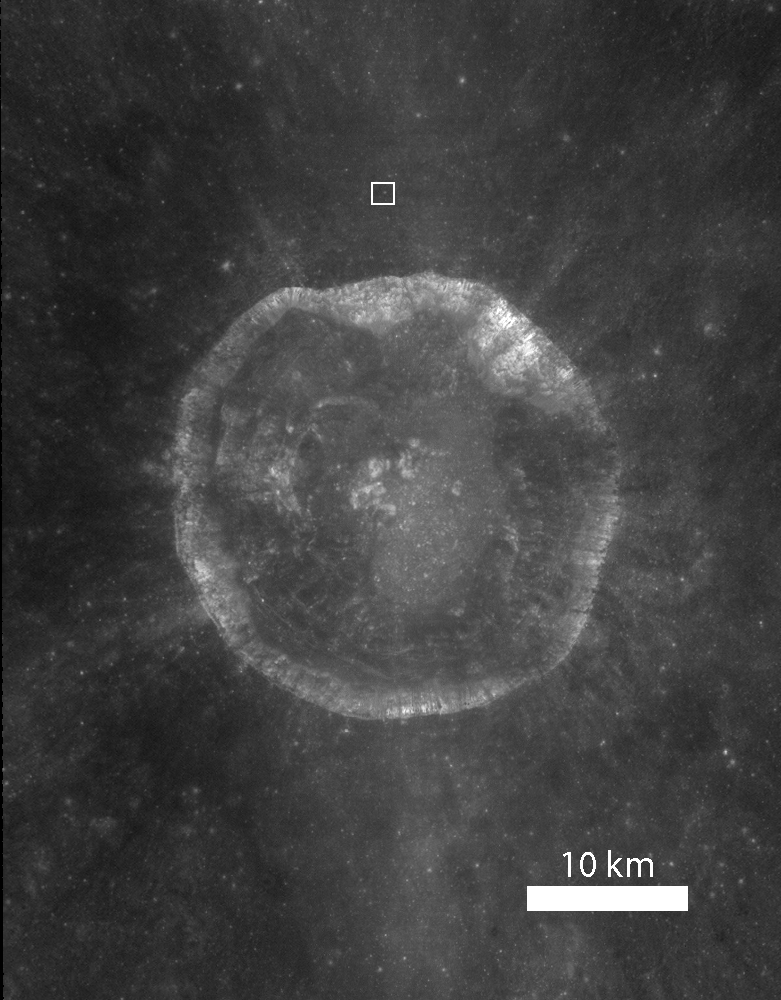
Kepler is a Copernican aged crater (32 km diameter, 8.1°N, 322.0°E) named for the German Astronomer Johannes Kepler, famous for his three laws of planetary motion. The impact event that created Kepler crater was energetic enough to eject this 100 m boulder out onto its continuous ejecta blanket. Impact events excavate material from great depth (approximately 1/3 the transient crater diameter) and distribute the material around the crater as ejecta. The material at the top of the impacted surface is ejected the furthest, while the deepest material has just enough energy to land on the crater rim. This distance to depth relation creates a natural core sample for astronauts to collect as they explore.
The lunar mare were formed as old impact basins filled by massive eruptions of very fluid basalt. Its easy to measure the area of these mare basalts, but how thick are they? Are there multiple basalt flows that form the mare? If the mare is thin enough the Kepler impact may have excavated both mare and the underlying highland material. Samples from this boulder, and others like it out to the edge of ejecta could answer these questions. An astronaut would start sampling at the far edge of the ejecta blanket and work towards the rim. During this traverse the intrepid geologist would in effect be traveling down the inside of the crater, without doing all the work of climbing in and out! The last sample on the rim would be from near the bottom of the crater. With this suite of samples the history of the emplacement of the basalts at this spot could be unraveled.
Search for other ejecta boulders in the NAC image!
Related Posts: Ejecta from Van de Graaf Crater
Published by Drew Enns on 9 November 2010
